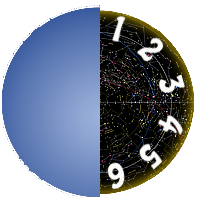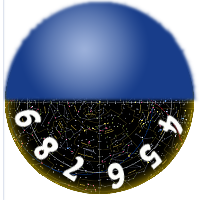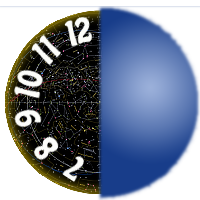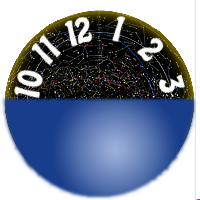Let's dream for a moment that the sky above all of us is peaceful. There is a section of space far away that interests us. We have divided this section into 12 sectors. Each sector either contains 1 object or is empty.
We know for sure there are:
4 asteroids  ,
,
2 comets  ,
,
2 gas clouds  ,
,
1 dwarf planet  ,
,
2 trully empty sectors  ,
,
and the invisible and mysterious Planet X 
Planet X is in one of the 3 sectors, which looks empty. We cannot see it, but we, like many famous astronomers before us, can calculate the location of this mysterious planet with the help of logic.
If you have played the board game "The Search for Planet X" please, remember that we do not use the basic rules placing the obects. If not - be sure to play, the game is beautiful.
How to win? Be the first to know which sector planet X is in and what objects are in its adjacent sectors. Or just have fun.
By solving tasks and riddles, successfully passing the levels of the game, and entering the correct answers, you will earn points - energy for your research. It will look like this.
|
|
15 |
You need to be aware of the time for two reasons:
- you don't have much time allocated for each level;
- only the visible part of the sky is available to you.
The visible part is 6 sectors out of 12 and on each level the visible sky section shifts by 3 sectors (1-6 in the first phase, 3-9 in the second, and so on, round and round).
 |
 |
 |
 |
Several research methods will be available to you:
1. Scanning sectors for a specific object.
For example, scan 4 sectors from 11 to 2 for asteroids and get the answer - 0, 1, 2, 3 or 4 asteroids in those sectors. Scanning of 2, 4 or 6 sectors in the currently visible sky is available. The more sectors (lower accuracy), the cheaper in points this study is and vice versa.
Be sure to write down all the information you receive and all your actions!
Here is the link to sheet to track your progress. You can print or open it in an online editor or mark progress in something like this.
2. Send a probe to a sector.
You will immediately know what is in the sector. You can do that 2 times per game or not do that at all. The first attempt is possible after the first round of tasks. The second one will be possible later – please, follow the statistics for that. But we remind you that even if there is Planet X in the sector, the result will come back as the "Empty sector." Exactly where planet X is and which empty sectors are "truly" empty can be deduced logically using the information you get from the research. See below.
3. Research.
Astronomers study space objects and their interactions with each other constantly. You can choose any of 6 topics depending on your current preferences. For example, after the research "Comets and Dwarf planet," you can get information - "There are no comets within 2 sectors from the Dwarf Planet." That means if the dwarf planet is in Sector 2, then there are no comets in Sectors 3, 4, 1, and 12. Or, in another research, you could get "There are no other asteroids opposite the asteroids," which means if the asteroid is in, say, Sector 5, no asteroids can get found in the opposite Sector 11.
The codes to research a topic (and close a level at the same time) are always the same - research-a, research-b, research-c, research-d, research-e and research-f. This action is worth 1 point, but you can do it even if you currently don't have any points (on credit). The trick is that the research code will close the current task level. Also, when you collect and/or spend all the available points, use those codes to close the level and move on as fast as possible. It's a race, remember? Now that you have read this far, here is the code for 2 points – 2222. Enter it during the first level of the game.
If any level ends for you by timeout, it will not give you any new information.
Well, good luck and have fun!
